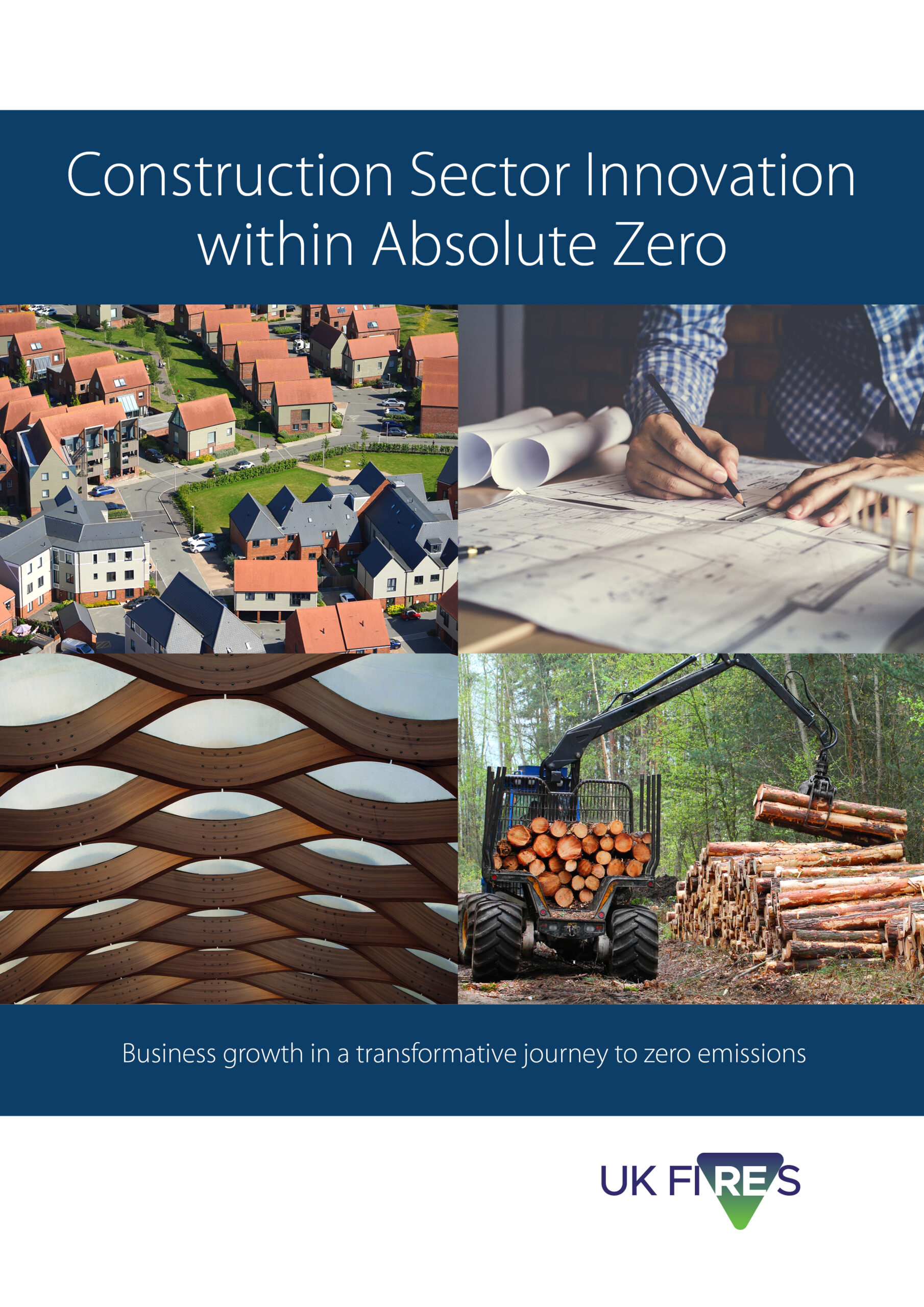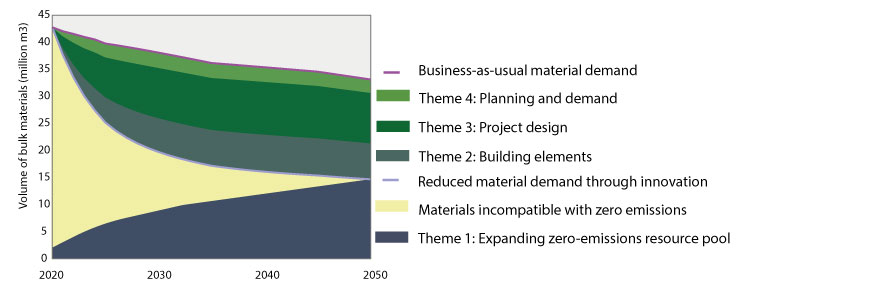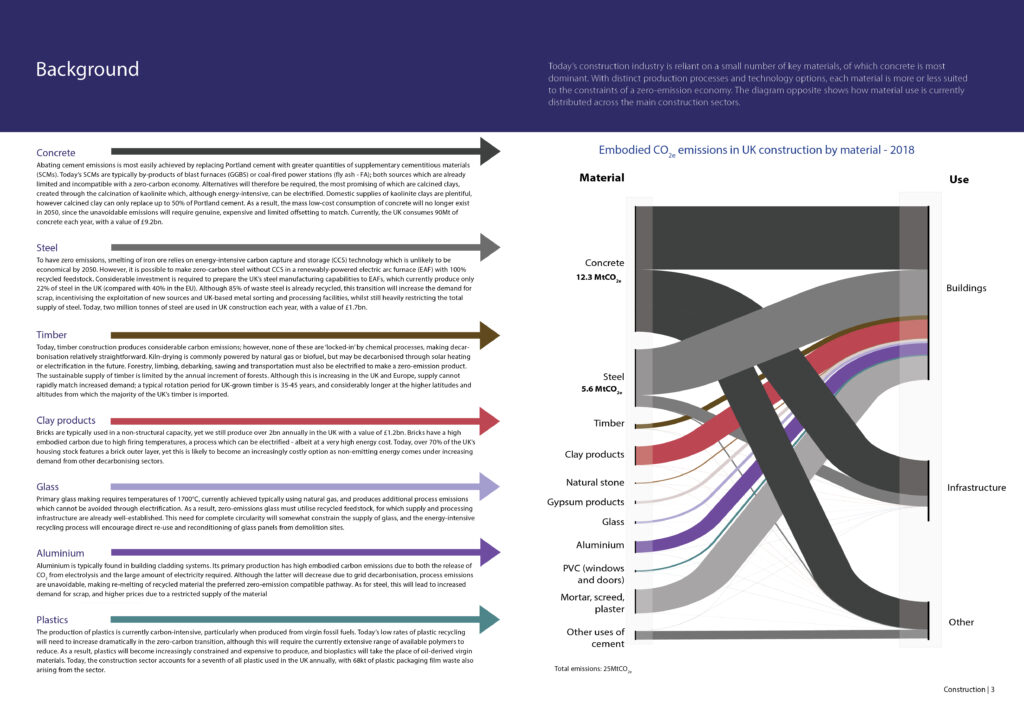
The construction industry will be transformed in a zero-emission society; from the choice of materials, their production and the design of structures, to the organisation of towns and cities. The built environment is a great enabler of other transformations in the way we work, play and live, and in transportation and energy.
Today, the built environment produces significant emissions both from its operation – heating, lighting and cooling – and embodied in the production, construction, maintenance and demolition of its constituent materials and components. Eliminating both forms of emission requires transformative change, yet the pathway for operational emissions is, whilst requiring major investment and labour mobilisation, relatively clear: grid decarbonisation, electrification and mass retrofit of buildings for energy-efficiency. For new buildings, modern standards such as PassivHaus allow the virtual elimination of operational energy.
Eliminating embodied emissions will bring far more fundamental changes. There is great potential to use less material without compromising functionality. However, while being essential, transformative, and creating vast potential for innovation, efficiency alone is not enough to reach zero emissions. The shape of the urban environment will also change, allowing for denser living and reduced transport needs and energy consumption. Yet this is still not enough.
To bridge the gap, the pallete of available construction materials must also transform, eliminating those with inherently emitting process and bringing forward non-emitting alternatives. These will include: naturally low-energy materials such as stone, earth and timber; components reused and repurposed from demolition; and electrified supplies of recycled steel, cement and bricks, albeit limited by a constrained supply of non-emitting electricity under high demand.
For the transition to occur at the required speed, the shape of the built environment must be designed to allow innovation to accelerate. This great transformation is also a great opportunity to improve the design of houses, the quality of life of all, and to enable a myriad of businesses capable of providing the know-how to meet the needs of the future. In this report, we present some of the needs, and the opportunities which will arise from them, and show how a zero-carbon construction industry can thrive.







